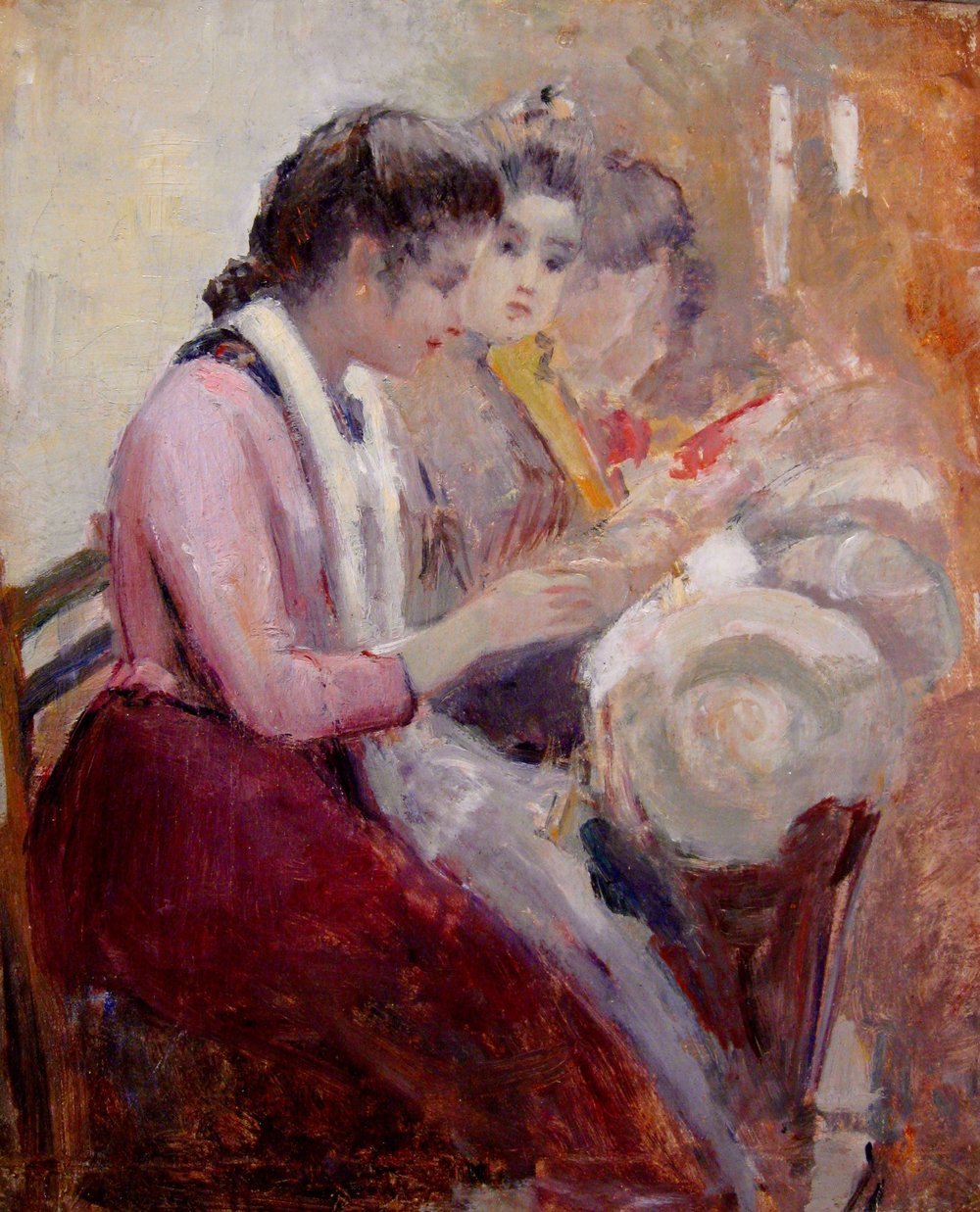Robert Frederick Blum
Currently unavailable. The gallery is interested in acquiring works by this artist.
Biography
(American/New York, Ohio 1857-1903)
Born in Cincinnati's Over-the-Rhine neighborhood, Robert Frederick Blum was the son of German-American parents. He shared much in common with several other leading artists associated with American Impressionism, all of whom were from Cincinnati, including John Twachtman, Ralph E. DeCamp, and Edward Potthast. All were all born in the 1850's, and each was a first-generation American whose parents had emigrated from Germany to Cincinnati. Their childhood experiences would have been similar, as they grew up in close proximity to one another in the city's boisterous German neighborhood. Twachtman and Blum knew each other as boys and shared an early enthusiasm for art.
A painter and illustrator, Blum likely developed an interest in magazine illustration while apprentice at Gibson & Co., lithographers in Cincinnati, during 1873 and 1874. He began drawing lessons at the McMicken School of Design (now the Art Academy of Cincinnati) c. 1873, transferring to the Ohio Mechanic's Institute in 1874, where he had the opportunity to study under Frank Duveneck, along with his friends Twachtman and DeCamp. While McMicken students were laboring over drawings from the antique, Duveneck's proteges were out on the streets looking at unvarnished reality with fresh eyes.
Blum went on to study at the Pennsylvania Academy of Fine Arts. There he was exposed to modern art at the Philadelphia Centennial Exhibition in 1876. He was fascinated by the brilliant colors and brushwork of the Spanish painter Mariano Fortuny, the tonal styles of James McNeill Whistler and by Japanese arts and crafts.
He returned to Cincinnati in 1877, set up a studio and exhibited at Closson's Gallery. By the 1880's, however, New York offered the greatest opportunities in America for patronage. It was an irresistible lure for artists from smaller cities all across the country. In 1900 the Cincinnati Enquirer noted that DeCamp, Blum, Twachtman and Potthast were all instructors at New York's Art Student's League, where years earlier Frank Duveneck had also taught. These artists subsequently became identified with the places where they painted many of their finest mature works: Blum with Italy and Japan, Twachtman with Connecticut, DeCamp with Boston and Potthast with the beaches of the Northeast.
Blum traveled to Europe, meeting with Whistler and Duveneck in Venice. His vibrant and atmospheric canvases did much to promote the cause of American Impressionism. He also worked in etchings, pastels, watercolor and founded the Society of Painters in Pastel. He lived in Venice from June 1885 to November 1886. What is considered his most important painting, the Venetian Lace Makers, was started here, and later it won him the 1889 Bronze Medal at the Exposition Universelle in Paris.
In the late nineteenth century, Europeans and Americans had developed a fascination with Japanese art and civilization, as Japan had then recently been opened to Westerners. Many were unfamiliar with Japan's culture. In 1890, Blum became one of the first American artists to visit the country. Accepting a commission from Scribner's Magazine, he created illustrations for a series of articles on Japanese life, and was immediately struck by the newness of his experience.
He devoted his last years primarily to teaching at the Art Student's League in New York, where he died in 1903. Blum was buried in Cincinnati.
Credit for the above information is given to the Cincinnati Enquirer's Cincinnati Wing; the Cincinnati Art Museum; and to Julie Aronson's article for Antiques and Fine Art; American Impressionism and the Queen City

